Zihao Zhang
School of Cyber Science and Engineering, Southeast University
SportsGPT: An LLM-driven Framework for Interpretable Sports Motion Assessment and Training Guidance
Dec 19, 2025Abstract:Existing intelligent sports analysis systems mainly focus on "scoring and visualization," often lacking automatic performance diagnosis and interpretable training guidance. Recent advances in Large Language Models (LLMs) and motion analysis techniques provide new opportunities to address the above limitations. In this paper, we propose SportsGPT, an LLM-driven framework for interpretable sports motion assessment and training guidance, which establishes a closed loop from motion time-series input to professional training guidance. First, given a set of high-quality target models, we introduce MotionDTW, a two-stage time series alignment algorithm designed for accurate keyframe extraction from skeleton-based motion sequences. Subsequently, we design a Knowledge-based Interpretable Sports Motion Assessment Model (KISMAM) to obtain a set of interpretable assessment metrics (e.g., insufficient extension) by contrasting the keyframes with the target models. Finally, we propose SportsRAG, a RAG-based training guidance model built upon Qwen3. Leveraging a 6B-token knowledge base, it prompts the LLM to generate professional training guidance by retrieving domain-specific QA pairs. Experimental results demonstrate that MotionDTW significantly outperforms traditional methods with lower temporal error and higher IoU scores. Furthermore, ablation studies validate the KISMAM and SportsRAG, confirming that SportsGPT surpasses general LLMs in diagnostic accuracy and professionalism.
Run, Ruminate, and Regulate: A Dual-process Thinking System for Vision-and-Language Navigation
Nov 18, 2025Abstract:Vision-and-Language Navigation (VLN) requires an agent to dynamically explore complex 3D environments following human instructions. Recent research underscores the potential of harnessing large language models (LLMs) for VLN, given their commonsense knowledge and general reasoning capabilities. Despite their strengths, a substantial gap in task completion performance persists between LLM-based approaches and domain experts, as LLMs inherently struggle to comprehend real-world spatial correlations precisely. Additionally, introducing LLMs is accompanied with substantial computational cost and inference latency. To address these issues, we propose a novel dual-process thinking framework dubbed R3, integrating LLMs' generalization capabilities with VLN-specific expertise in a zero-shot manner. The framework comprises three core modules: Runner, Ruminator, and Regulator. The Runner is a lightweight transformer-based expert model that ensures efficient and accurate navigation under regular circumstances. The Ruminator employs a powerful multimodal LLM as the backbone and adopts chain-of-thought (CoT) prompting to elicit structured reasoning. The Regulator monitors the navigation progress and controls the appropriate thinking mode according to three criteria, integrating Runner and Ruminator harmoniously. Experimental results illustrate that R3 significantly outperforms other state-of-the-art methods, exceeding 3.28% and 3.30% in SPL and RGSPL respectively on the REVERIE benchmark. This pronounced enhancement highlights the effectiveness of our method in handling challenging VLN tasks.
Simulating Distribution Dynamics: Liquid Temporal Feature Evolution for Single-Domain Generalized Object Detection
Nov 13, 2025Abstract:In this paper, we focus on Single-Domain Generalized Object Detection (Single-DGOD), aiming to transfer a detector trained on one source domain to multiple unknown domains. Existing methods for Single-DGOD typically rely on discrete data augmentation or static perturbation methods to expand data diversity, thereby mitigating the lack of access to target domain data. However, in real-world scenarios such as changes in weather or lighting conditions, domain shifts often occur continuously and gradually. Discrete augmentations and static perturbations fail to effectively capture the dynamic variation of feature distributions, thereby limiting the model's ability to perceive fine-grained cross-domain differences. To this end, we propose a new method, Liquid Temporal Feature Evolution, which simulates the progressive evolution of features from the source domain to simulated latent distributions by incorporating temporal modeling and liquid neural network-driven parameter adjustment. Specifically, we introduce controllable Gaussian noise injection and multi-scale Gaussian blurring to simulate initial feature perturbations, followed by temporal modeling and a liquid parameter adjustment mechanism to generate adaptive modulation parameters, enabling a smooth and continuous adaptation across domains. By capturing progressive cross-domain feature evolution and dynamically regulating adaptation paths, our method bridges the source-unknown domain distribution gap, significantly boosting generalization and robustness to unseen shifts. Significant performance improvements on the Diverse Weather dataset and Real-to-Art benchmark demonstrate the superiority of our method. Our code is available at https://github.com/2490o/LTFE.
Towards Reliable LLM-based Robot Planning via Combined Uncertainty Estimation
Oct 09, 2025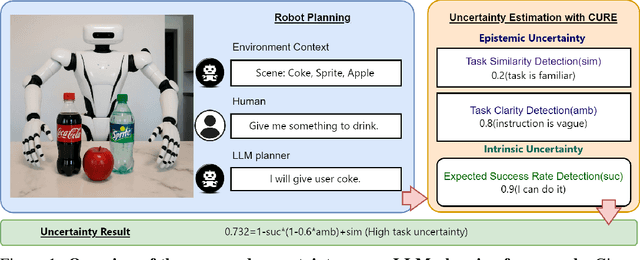
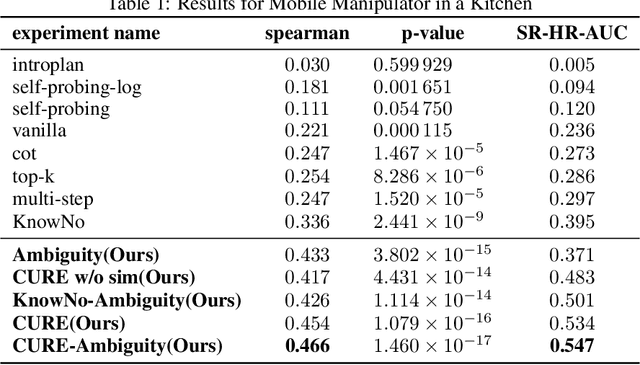
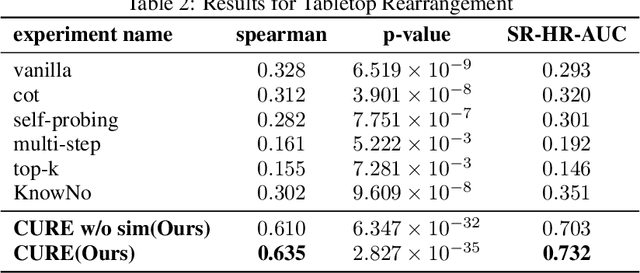
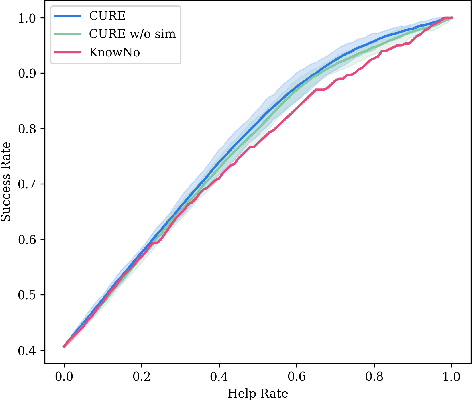
Abstract:Large language models (LLMs) demonstrate advanced reasoning abilities, enabling robots to understand natural language instructions and generate high-level plans with appropriate grounding. However, LLM hallucinations present a significant challenge, often leading to overconfident yet potentially misaligned or unsafe plans. While researchers have explored uncertainty estimation to improve the reliability of LLM-based planning, existing studies have not sufficiently differentiated between epistemic and intrinsic uncertainty, limiting the effectiveness of uncertainty esti- mation. In this paper, we present Combined Uncertainty estimation for Reliable Embodied planning (CURE), which decomposes the uncertainty into epistemic and intrinsic uncertainty, each estimated separately. Furthermore, epistemic uncertainty is subdivided into task clarity and task familiarity for more accurate evaluation. The overall uncertainty assessments are obtained using random network distillation and multi-layer perceptron regression heads driven by LLM features. We validated our approach in two distinct experimental settings: kitchen manipulation and tabletop rearrangement experiments. The results show that, compared to existing methods, our approach yields uncertainty estimates that are more closely aligned with the actual execution outcomes.
AniME: Adaptive Multi-Agent Planning for Long Animation Generation
Aug 27, 2025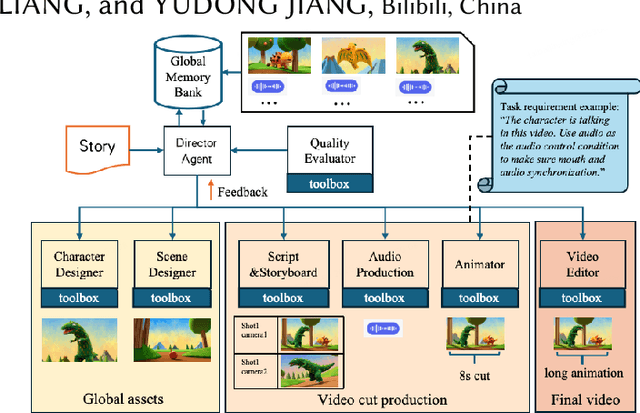

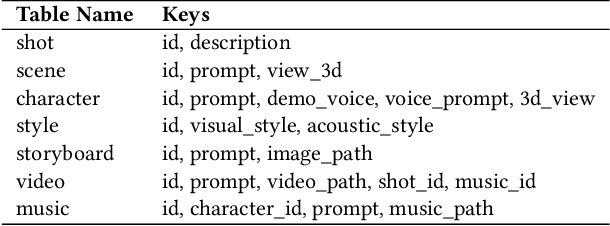
Abstract:We present AniME, a director-oriented multi-agent system for automated long-form anime production, covering the full workflow from a story to the final video. The director agent keeps a global memory for the whole workflow, and coordinates several downstream specialized agents. By integrating customized Model Context Protocol (MCP) with downstream model instruction, the specialized agent adaptively selects control conditions for diverse sub-tasks. AniME produces cinematic animation with consistent characters and synchronized audio visual elements, offering a scalable solution for AI-driven anime creation.
A Survey: Learning Embodied Intelligence from Physical Simulators and World Models
Jul 01, 2025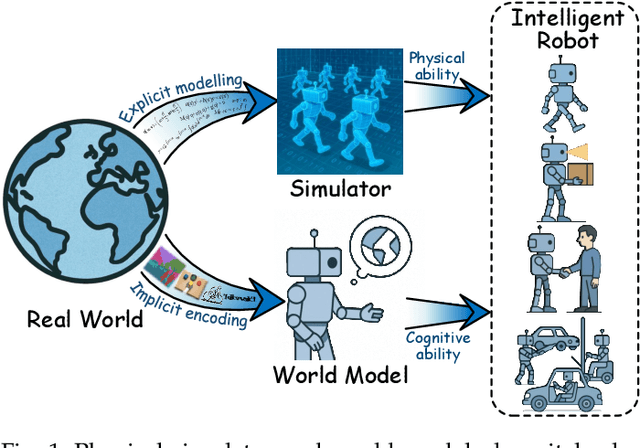



Abstract:The pursuit of artificial general intelligence (AGI) has placed embodied intelligence at the forefront of robotics research. Embodied intelligence focuses on agents capable of perceiving, reasoning, and acting within the physical world. Achieving robust embodied intelligence requires not only advanced perception and control, but also the ability to ground abstract cognition in real-world interactions. Two foundational technologies, physical simulators and world models, have emerged as critical enablers in this quest. Physical simulators provide controlled, high-fidelity environments for training and evaluating robotic agents, allowing safe and efficient development of complex behaviors. In contrast, world models empower robots with internal representations of their surroundings, enabling predictive planning and adaptive decision-making beyond direct sensory input. This survey systematically reviews recent advances in learning embodied AI through the integration of physical simulators and world models. We analyze their complementary roles in enhancing autonomy, adaptability, and generalization in intelligent robots, and discuss the interplay between external simulation and internal modeling in bridging the gap between simulated training and real-world deployment. By synthesizing current progress and identifying open challenges, this survey aims to provide a comprehensive perspective on the path toward more capable and generalizable embodied AI systems. We also maintain an active repository that contains up-to-date literature and open-source projects at https://github.com/NJU3DV-LoongGroup/Embodied-World-Models-Survey.
Cost-Augmented Monte Carlo Tree Search for LLM-Assisted Planning
May 20, 2025Abstract:While LLMs excel at open-ended reasoning, they often struggle with cost-sensitive planning, either treating all actions as having equal cost or failing to stay within strict budgets. In this paper, we introduce Cost-Augmented Monte Carlo Tree Search (CATS), a novel approach that brings explicit cost-awareness into LLM-guided planning. Tight cost constraints push the planner to quickly identify infeasible solutions, while looser constraints encourage optimization for minimal cost. We benchmark top LLMs such as GPT-4.1, Claude-3.7-Sonnet, and DeepSeek-R1, against our CATS planner to evaluate their performance in cost-sensitive scenarios. Our experiments suggest that raw LLMs such as GPT-4.1 often falter under tight budgets, whereas CATS consistently delivers strong performance, achieving higher task success rates and better cost efficiency. CATS provides an effective solution for budget-aware decision-making by combining the reasoning power of LLMs with structured search.
Object-Level Verbalized Confidence Calibration in Vision-Language Models via Semantic Perturbation
Apr 21, 2025



Abstract:Vision-language models (VLMs) excel in various multimodal tasks but frequently suffer from poor calibration, resulting in misalignment between their verbalized confidence and response correctness. This miscalibration undermines user trust, especially when models confidently provide incorrect or fabricated information. In this work, we propose a novel Confidence Calibration through Semantic Perturbation (CSP) framework to improve the calibration of verbalized confidence for VLMs in response to object-centric queries. We first introduce a perturbed dataset where Gaussian noise is applied to the key object regions to simulate visual uncertainty at different confidence levels, establishing an explicit mapping between visual ambiguity and confidence levels. We further enhance calibration through a two-stage training process combining supervised fine-tuning on the perturbed dataset with subsequent preference optimization. Extensive experiments on popular benchmarks demonstrate that our method significantly improves the alignment between verbalized confidence and response correctness while maintaining or enhancing overall task performance. These results highlight the potential of semantic perturbation as a practical tool for improving the reliability and interpretability of VLMs.
NTIRE 2025 Challenge on Real-World Face Restoration: Methods and Results
Apr 20, 2025Abstract:This paper provides a review of the NTIRE 2025 challenge on real-world face restoration, highlighting the proposed solutions and the resulting outcomes. The challenge focuses on generating natural, realistic outputs while maintaining identity consistency. Its goal is to advance state-of-the-art solutions for perceptual quality and realism, without imposing constraints on computational resources or training data. The track of the challenge evaluates performance using a weighted image quality assessment (IQA) score and employs the AdaFace model as an identity checker. The competition attracted 141 registrants, with 13 teams submitting valid models, and ultimately, 10 teams achieved a valid score in the final ranking. This collaborative effort advances the performance of real-world face restoration while offering an in-depth overview of the latest trends in the field.
Visual Consensus Prompting for Co-Salient Object Detection
Apr 19, 2025Abstract:Existing co-salient object detection (CoSOD) methods generally employ a three-stage architecture (i.e., encoding, consensus extraction & dispersion, and prediction) along with a typical full fine-tuning paradigm. Although they yield certain benefits, they exhibit two notable limitations: 1) This architecture relies on encoded features to facilitate consensus extraction, but the meticulously extracted consensus does not provide timely guidance to the encoding stage. 2) This paradigm involves globally updating all parameters of the model, which is parameter-inefficient and hinders the effective representation of knowledge within the foundation model for this task. Therefore, in this paper, we propose an interaction-effective and parameter-efficient concise architecture for the CoSOD task, addressing two key limitations. It introduces, for the first time, a parameter-efficient prompt tuning paradigm and seamlessly embeds consensus into the prompts to formulate task-specific Visual Consensus Prompts (VCP). Our VCP aims to induce the frozen foundation model to perform better on CoSOD tasks by formulating task-specific visual consensus prompts with minimized tunable parameters. Concretely, the primary insight of the purposeful Consensus Prompt Generator (CPG) is to enforce limited tunable parameters to focus on co-salient representations and generate consensus prompts. The formulated Consensus Prompt Disperser (CPD) leverages consensus prompts to form task-specific visual consensus prompts, thereby arousing the powerful potential of pre-trained models in addressing CoSOD tasks. Extensive experiments demonstrate that our concise VCP outperforms 13 cutting-edge full fine-tuning models, achieving the new state of the art (with 6.8% improvement in F_m metrics on the most challenging CoCA dataset). Source code has been available at https://github.com/WJ-CV/VCP.
 Add to Chrome
Add to Chrome Add to Firefox
Add to Firefox Add to Edge
Add to Edge